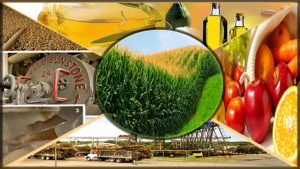What is it?
Wood ashes are the remains of fire consumed wood. This is a fairly simple definition, but that’s what it is. When people understood the benefits of wood ash in the 18th century, the British colonies of America were exporting large amounts of this material back to Great Britain.
What is the primary benefit?
Wood ash is a good source of Potash (aka potassium… in a water soluble form). It is also a good source of other trace minerals. When wood burns, the nitrogen and sulfur are lost as gases. What remains is potassium (potash) plus calcium, magnesium, iron, phosphorus, manganese, and sodium. There are also other minerals present to a lesser degree including aluminum, arsenic, boron, cadmium, chromium, copper, lead, mercury, molybdenum, nickel, selenium, and zinc. Some of these minerals, like arsenic and nickel, where thought to be poisons to biological life. However, we know now that most of these minerals actually have a vital, albeit very small, role in the biology of microorganisms and plants. Returning these minerals and trace elements to the soil will allow our plants and soils microbes to utilize what they need for a healthy life. Also, wood ash helps to raise the pH of acidic soils – this is the calcium carbonate component (aka garden lime). Most soils could use this unless you are growing acid-loving plants like blueberries. See NOTE below.
How is it used?
Ash from our wood stoves and fireplaces can be used if we did not use chemical starters, burned chemically treated woods, burned non-plant material including cardboard and particle board which contains toxic glues. Ash can be mixed directly into the compost pile. Just sprinkle a little ash on each layer. Wood ash can be sprinkled directly on the soil (in the Spring) and lightly worked into the top layer around plants that could benefit from a boost of potassium, calcium, and pH. Hardwoods will produce three times as much ash and five times as many nutrients than softwoods.
Application:
If you soil has adequate potassium levels: 3-5 lbs per 1,000 square feet
If you soil has medium potassium levels: 5-10 lbs per 1,000 square feet
If you soil has low potassium levels: 10-20 lbs per 1,000 square feet
or
about one half to one pound ash around each shrub
Composition:
NPK Ratio: 0-1-3 to 0-1.5-8 (depends on the source of wood, the age of the ash, and other factors)
A GENERAL NOTE ABOUT FERTILIZERS:
Always test your soil before adding any fertilizers. We can easily damage our plants and the soil by indiscriminately adding soil amendments.









